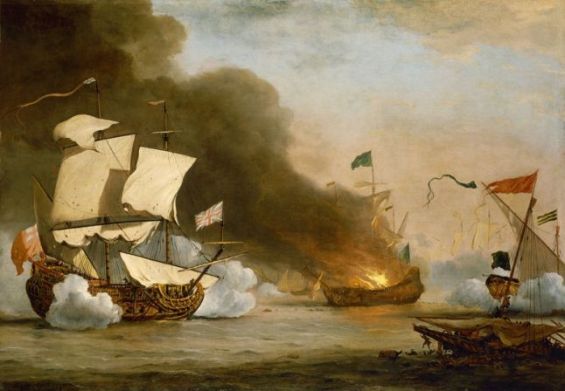Piracy existed all along the Barbary coasts starting from the 16th to the 19th century. Throughout the coastal strip of North Africa, Morocco, Algeria, Tunisia and Libya, pirates were heavily operating. They captured slaves, organized raids and terrorized European coastal cities in all of Portugal, Spain, France, Italy, the British Isles, the Netherlands and Iceland, according to historical accounts.
Pirates or Corsairs operated in several Barbary cities and for Morocco Salé was a hub and a powerful port that led the region for years. The coastal city which was neighboring Bou Regreg river was notorious for giving birth to the Republic of Salé, a republic not like others.

Expelled from Spain and installed in Salé
During the period of September 1609 and January 1610, Moriscos, Muslims who converted to Christianity in Spain, and especially those who resided in Hornachos in Western Spain, were massively deported amid the Spanish inquisition. Around 3,000 rich Moriscos, who anticipated the 1609 expulsion edicts ordered by Philip III of Spain, found refuge in the old Medina of Rabat and around the bank of the Bou Regreg river. They were later joined by 10,000 down-and-out expelled from the European country.
According to an article written by Leila Maziane, a Doctor and professor of Modern History at the University of Hassan II in Mohammedia, «the Reconquista and the expulsion of the Moriscos have been at the origin of the creation and the development of Salé».
 The flag of the Republic of Salé./Ph. DR
The flag of the Republic of Salé./Ph. DR
Indeed, Salé was an exile for Moriscos kicked out from Spain. «The city on the Moroccan Atlantic coast became politically independent harboring an important privateers port from which numerous attacks were launched against Spain and in the high seas, against the interests of other European nations», explains Professor Maziane. Salé was named a republic in 1624 and was granted a special status in the Kingdom of Morocco. The Republic during the same year had Jan Janszoon, also known as Murat Reis the Younger (1570-1641) a Dutch Barbary pirate, as the «Grand Admiral» and President.
A Republic of pirates
The Republic’s main commercial activity was slavery and piracy. Pirates captured slaves to sell them to the Ottoman Empire or to the Muslim Slavery Market in North Africa and the Middle East. European States, consequently, suffered from corsairs’ raids to the point that populations started leaving coasts that were threatened by pirates. Corsairs also attacked ships and goods throughout the Mediterranean Sea, Europe, America and Sub-Saharan Africa.
Although, pirates gained a lot of money and managed to present a real threat to European countries during the 17th century, the Republic of Salé did not survive for a long time. After gaining independence and after Janszoon left Salé in 1627, Moriscos refused to recognize the authority of the Sultan Zidan al-Nasir, a Saadian Sultan who died on September of the same year. Moriscos stopped paying the tithe (taxes) on their incomes and proclaimed a Republic. The latter was ruled by a council also known in Arabic as Diwan that contained 12 to 14 notable people whose members had to elect annually a Governor and a Captain General of the Fortalesa during the month of May.
 Where Barbary pirates used to operate./Ph. DR
Where Barbary pirates used to operate./Ph. DR
Disestablished by the Alaouite
Between 1627 and 1630, the council was mainly controlled by Hornacheros who were more powerful that non-Hornachero Moriscos, also known as Andalusians. In 1930 clashes between Hornacheros and Andalusians led to the election of a Qaid and a new Diwan of 16 members (8 Andalusians and 8 Hornacheros) through an agreement.
In 1641, the Zaouia of Dila controlled Morocco and put a religious hegemony over Salé. By 1660, Salé and Rabat were seized by Sultan Al-Rashid of Morocco of the Alaouite dynasty. In 1668 the Republic of Salé was disestablished by Moulay al-Rashid who kicked out the Dilaites.





 chargement...
chargement...












